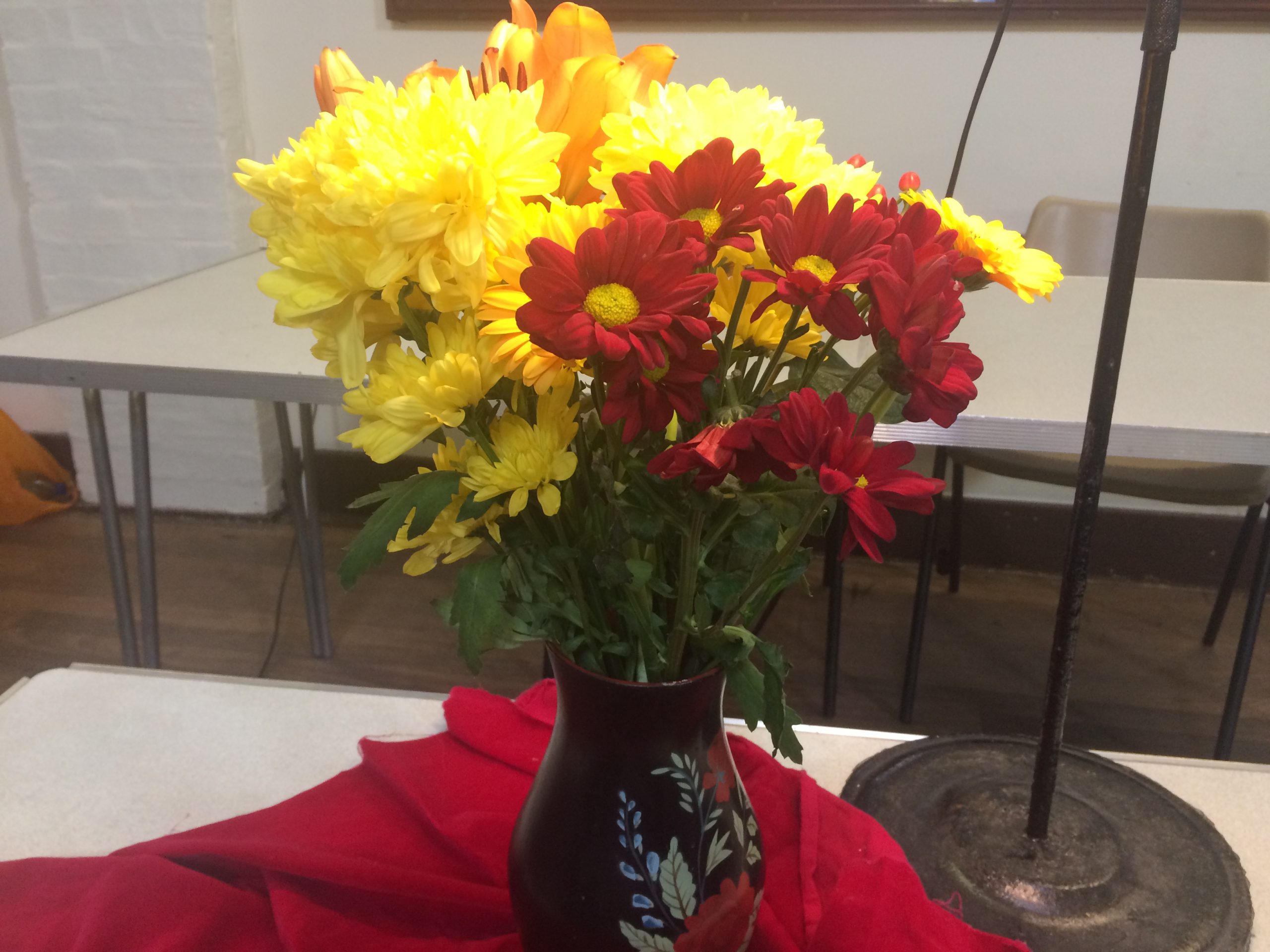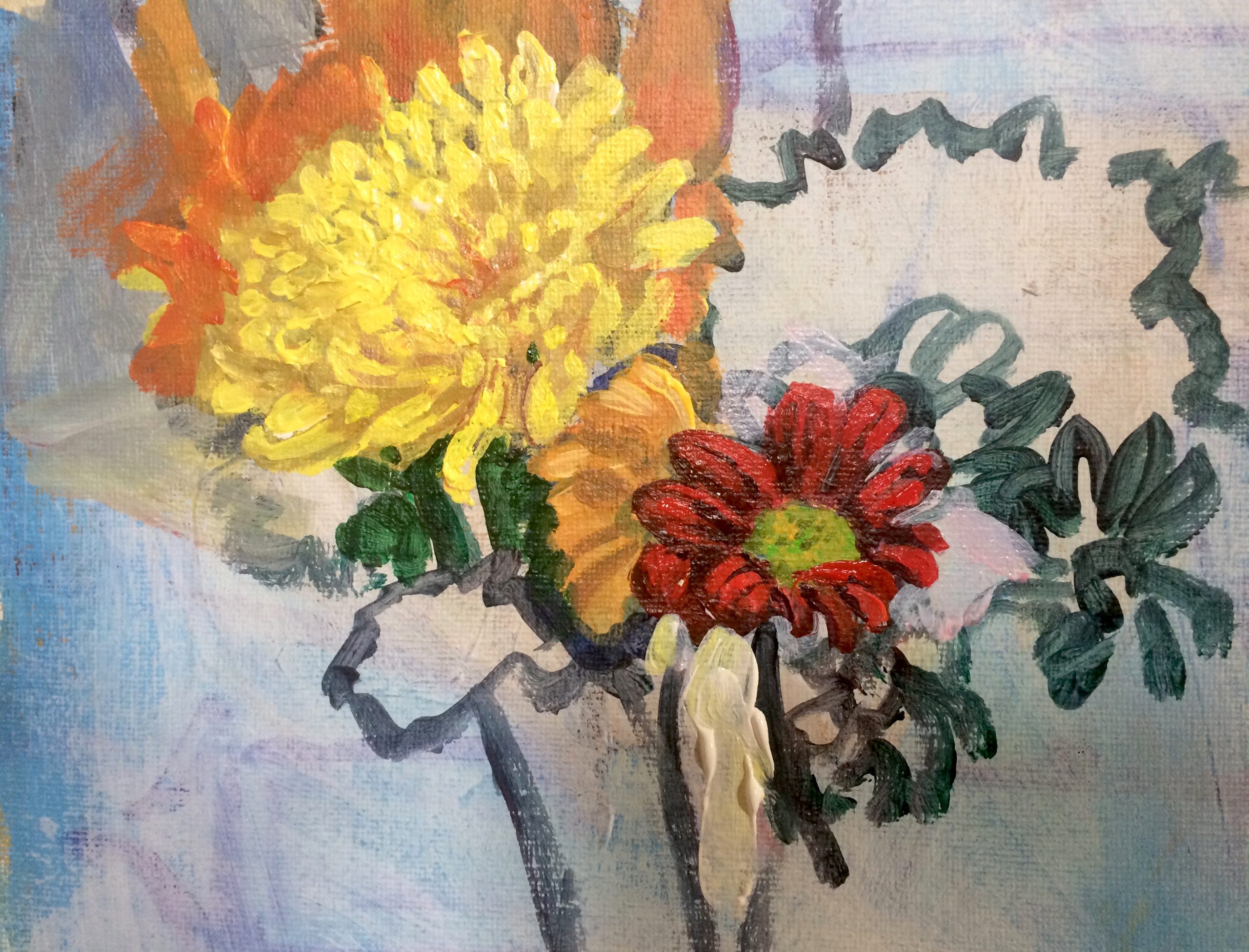When tackling a complex subject like a vase of flowers, it’s a good idea to draw the outline of the entire thing using a dark colour.
Start the outline by placing your main flowers ( the ones that are wholly visible ) first and then moving on to the partially visible ones, moving round and outwards till you have captured everything.
Now you can move on to painting the flowers. Start by painting the background, then the rearmost flowers, so that you can paint the main subject of the wholly visible flowers on top of the background ones.
Caroline advised buying a high quality yellow paint as it often is very difficult to get a good mix using the cheaper ones with less pigment. She mixed three shades of yellow using lemon yellow, yellow ochre and white. Adding the white makes the colour more opaque and also stops it becoming too acid. You can also add a tiny bit of red , but be careful not to add too much.
Using a pointed round brush you can make a nice petal shape. Start by putting in the darker areas and then paint on your petals on top. Concentrate on darks and lights to bring out the shapes of the petals. Next,use a smaller brush to add lots of bright tips to represent the tops of the petals, also using this brush to put in more darker shades to further define your petals.
For the red flower, first put in the centre in a bright phthalo green. Then, using a rigger, go over with small dots of yellow, finishing off with the rigger to put in a dark shadow under the dots. Paint on the red petals and then add white on top where you see the lighter colour.
Then paint on your darker red and finally, once it’s dry, paint over with the first red, and the white areas will now pop! For the leaves and stems use phthalo green with red to get a dark green.





